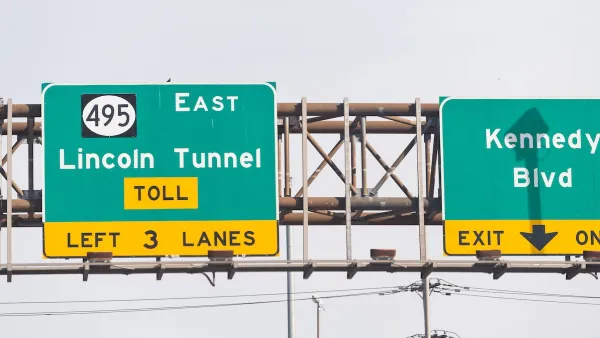Congestion pricing is really just a regressive tax thats hurt the poor, argues one New York Assemblyman. If government wants to improve transit and the environment, it should simply tax wealthy Americans more to do it.
"[T]he assault in Albany against the Bloomberg plan was led by...Assemblyman Richard L. Brodsky, whose father, it is worth noting, was an organizer for an engineers' union and whose mother worked in the 1948 Progressive Party campaign of Henry Wallace. They reared their son with the principles of the Progressive movement. Thus Mr. Brodsky, 61, in an interview at his Colonial-era home here, said he had long opposed "pricing mechanisms as the preferred way of solving social problems." The reason: these schemes put the burden for paying the fees on blueblood and blue collar alike, he said.
"I don't believe public places should be distributed based on an ability to pay," Mr. Brodsky said, stretching his suede cowboy boots out from his armchair while sipping a glass of tea. "In the end I'm a progressive before I'm an environmentalist."
However far Mr. Brodsky - or for that matter his entire '60s generation - may have strayed from younger, idealistic stirrings, combating traffic congestion with fees has for more than a decade seemed to him, well, regressive. The people who would have borne the brunt were working- and middle-class stiffs in Brooklyn, Queens and the Bronx who for whatever reason feel they need to take a car into the area below 60th Street on workdays."
""These pricing mechanisms try to modify behavior of people who can't afford to do what it is we want them to do," he said."
"There's a fair argument to be made that we already have pricing mechanisms - subway fares and bridge tolls - that burden rich and poor alike. But opponents like Mr. Brodsky say that if a relatively novel twist like congestion pricing succeeds, governments desperate for money could start charging people for taking a walk in a city park or entering a library."
FULL STORY: Congestion Pricing: Just Another Regressive Tax?

National Parks Layoffs Will Cause Communities to Lose Billions
Thousands of essential park workers were laid off this week, just before the busy spring break season.

Retro-silient?: America’s First “Eco-burb,” The Woodlands Turns 50
A master-planned community north of Houston offers lessons on green infrastructure and resilient design, but falls short of its founder’s lofty affordability and walkability goals.

Delivering for America Plan Will Downgrade Mail Service in at Least 49.5 Percent of Zip Codes
Republican and Democrat lawmakers criticize the plan for its disproportionate negative impact on rural communities.

Test News Post 1
This is a summary

Test News Headline 46
Test for the image on the front page.

Balancing Bombs and Butterflies: How the National Guard Protects a Rare Species
The National Guard at Fort Indiantown Gap uses GIS technology and land management strategies to balance military training with conservation efforts, ensuring the survival of the rare eastern regal fritillary butterfly.
Urban Design for Planners 1: Software Tools
This six-course series explores essential urban design concepts using open source software and equips planners with the tools they need to participate fully in the urban design process.
Planning for Universal Design
Learn the tools for implementing Universal Design in planning regulations.
EMC Planning Group, Inc.
Planetizen
Planetizen
Mpact (formerly Rail~Volution)
Great Falls Development Authority, Inc.
HUDs Office of Policy Development and Research
NYU Wagner Graduate School of Public Service





























